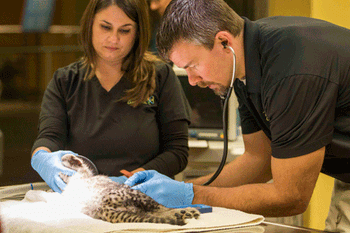
No two days are the same for Busch Gardens senior veterinarian, who cares for about 300 species.

No two days are the same for Busch Gardens senior veterinarian, who cares for about 300 species.

Avian Bornavirus causes blindness, heart failure or intestinal blockage.

Insight from the original exotic-animal veterinarian at Conejo Valley Veterinary Hospital.
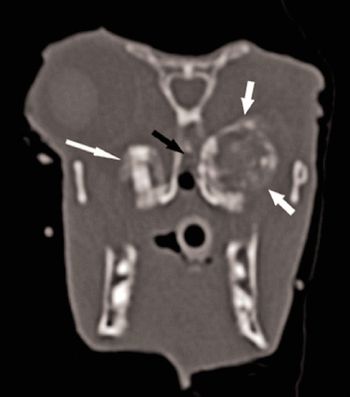
After an enucleation, purulent material began coming from this rabbit's nose and filled the empty orbit. Find out why.

Educate pet owners about issues like behavior, dentistry, senior care, payment options at your veterinary practice, and more.
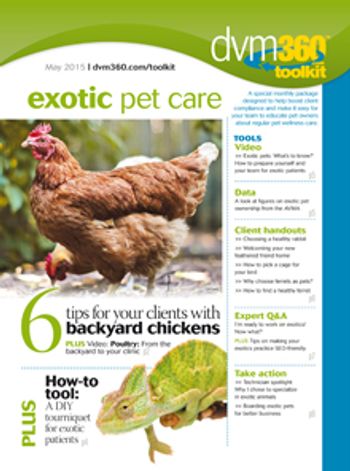
Exotic animals deserve great veterinary care. Help clients get there using these resources.
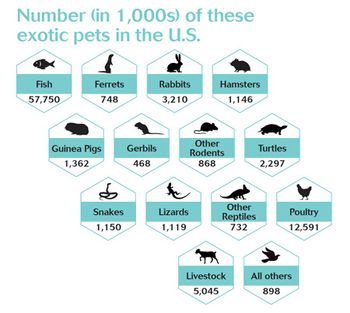
Data from the AVMA shows that the popularity of exotic pets continues to grow.
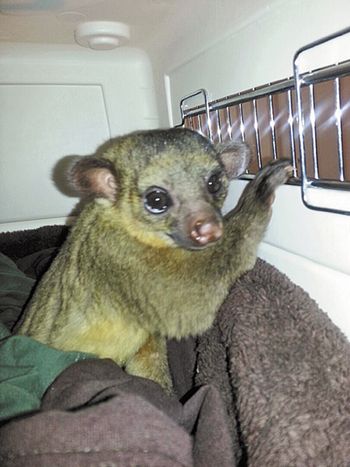
Even if exotic pets aren't your thing, have you considered giving your veterinary business a boost by boarding these special pets?

Whether your practice sees exotic pets or you simply field a phone call every now and then, arm your team to educate clients on exotic pet care using these tools.

Antimicrobial agents are commonly used in avian practice for the treatment of certain infectious diseases.

A clinic or veterinary facility planning to see critical exotic animal cases needs to do some homework.

As avian practitioners, it is our ethical obligation to reduce and treat pain and stress in our avian patients.

As stated in the accompanying lecture, Introduction to Backyard Poultry, bio security is an essential part of any poultry health management program.

The vast majority of companion birds have not been surgically or chemically altered and are fully capable of experiencing natural hormonal influences on the reproductive tract and the body as a whole.

Respiratory disease is relatively common in companion birds.

Raising backyard poultry can be rewarding not only for the production of consumable eggs and meat, but also for companionship and personal enjoyment.

Atherosclerosis is a devastating disease common in older birds and often associated with sudden clinical decline and unexpected death.
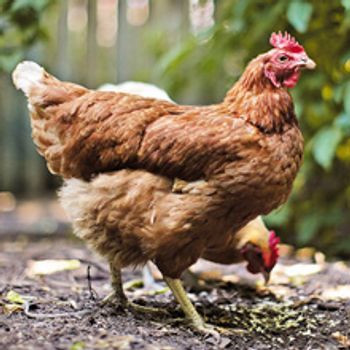
These gentle birds are a great way to start with avian species.
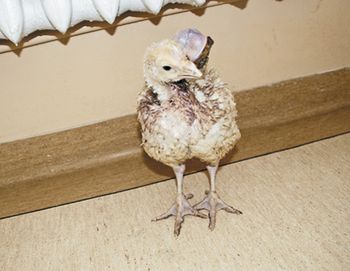
Take a peek at how this turkey with a tennis-ball sized tumor was successfully treated.
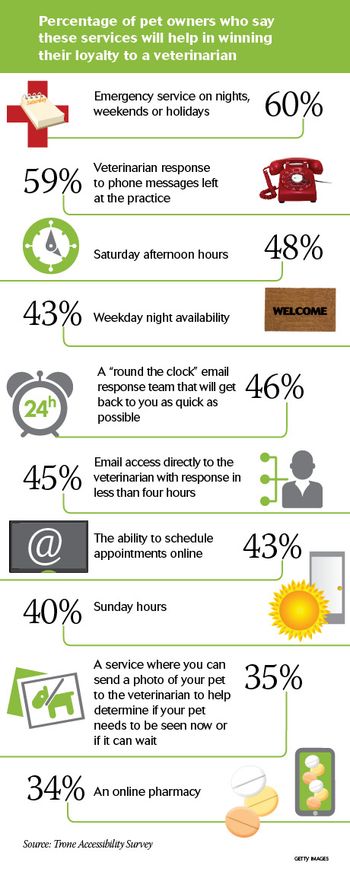

Heres what I wish everyone at veterinary practices knew about exotics veterinarians.

Often even routine medical procedures on large carnivores require that the animal be anesthetized. Here, Ryan DeVoe, DVM, MSpVM, DACZM, DABVP, clinical veterinarian with Disneys Animal Kingdom, tells a tale of his staff staying chilled out while attending to a polar bear.

Special report from CVC Kansas City.

Dont assume you know how to handle every exotic case that falls in your lap.

Dr. Stephen Divers discusses anesthesia in chelonians using a drug that is on its way to being approved for use in the United States.